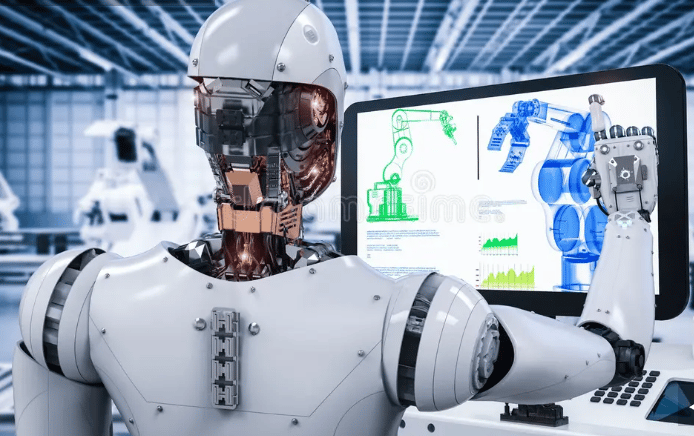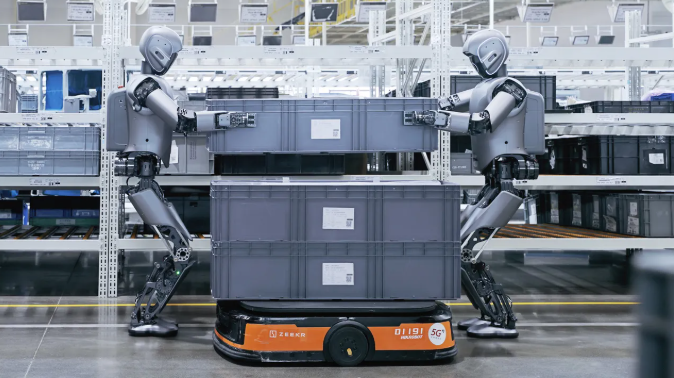Do You Know About the World’s First Humanoid Robot Factory
#HumanoidRobots, #RobotFactory, #TeslaOptimus, #AgilityRobotics, #DigitRobot, #MadeInIndiaRobot, #AIRevolution, #FutureOfWork, #IndiaInnovation, #RobotNews, #Vyommitra, #RobotFactoryNews, #Humanoid Robot Factory
TECH & SCIENCE
8/1/20252 min read




Humanoid robots are no longer a dream of science fiction—they are being mass-produced in factories today. The world’s first dedicated humanoid robot factory has been set up, signaling the start of a new industrial revolution, where robots will live and work alongside us.
Let’s explore how this transformation is unfolding and why it matters.
1. What Is a Humanoid Robot?
A humanoid robot is a machine designed to resemble and behave like a human. It may walk on two legs, interact using voice, perform tasks using arms and fingers, and even mimic emotions and expressions. These robots are being developed for industries like manufacturing, healthcare, hospitality, and home services.
2. The World’s First Humanoid Robot Factory
In 2023, American robotics startup Agility Robotics opened the world’s first humanoid robot factory in Salem, Oregon, USA. Called RoboFab, this factory can produce up to 10,000 humanoid robots per year. Their robot, named Digit, can walk, carry packages, and work in warehouses.
3. Tesla’s Optimus and Elon Musk’s Vision
Elon Musk’s company Tesla is also developing a humanoid robot called Optimus, expected to be mass-produced for home and factory use. Tesla’s goal is to create an affordable, intelligent robot that can perform repetitive or dangerous tasks. The company believes humanoid robots could become bigger than the car industry in the coming decades.
4. China’s Leap in Humanoid Robotics
China is also racing ahead. In July 2024, the Chinese Ministry of Industry and Information Technology launched an initiative to mass-produce humanoid robots by 2025. Companies like Fourier Intelligence and UBTech are already showcasing advanced prototypes like GR-1 and Walker X—robots that can dance, deliver items, and provide elderly care.
5. India’s Entry into Humanoid Robotics
India has begun exploring humanoid robotics with efforts by DRDO, IITs, and private players like Asimov Robotics. The humanoid robot Vyommitra, developed by ISRO, is set to assist in India's first human space mission Gaganyaan. Startups are also building robots for banks, hospitals, and malls.
6. Applications of Humanoid Robots
Humanoid robots are being trained to:
Assist in elder care and rehabilitation
Work in factories and warehouses
Serve as receptionists or guides
Participate in space missions
Support in disaster recovery
7. Future Potential and Concerns
Humanoid robots could become part of everyday life by the 2030s. But with them come ethical concerns:
Job displacement
Data privacy and surveillance
Physical safety
Emotional dependence on machines
Governments worldwide are now drafting AI and robotics policies to manage this rise responsibly.
Conclusion
The age of humanoid robots is not in the distant future—it has already begun. With factories like RoboFab, Optimus in Tesla’s labs, and growing developments in Asia, we are witnessing a historic shift in how work, care, and interaction are evolving. The question is no longer "if," but "how soon" robots will become part of our daily lives.
Knowledge
Empowering minds with reliable educational content daily.
Newsletter Signup
© 2025 DoYouKnow. All rights reserved.
Stay Ahead of the Trends – Join Our Newsletter
